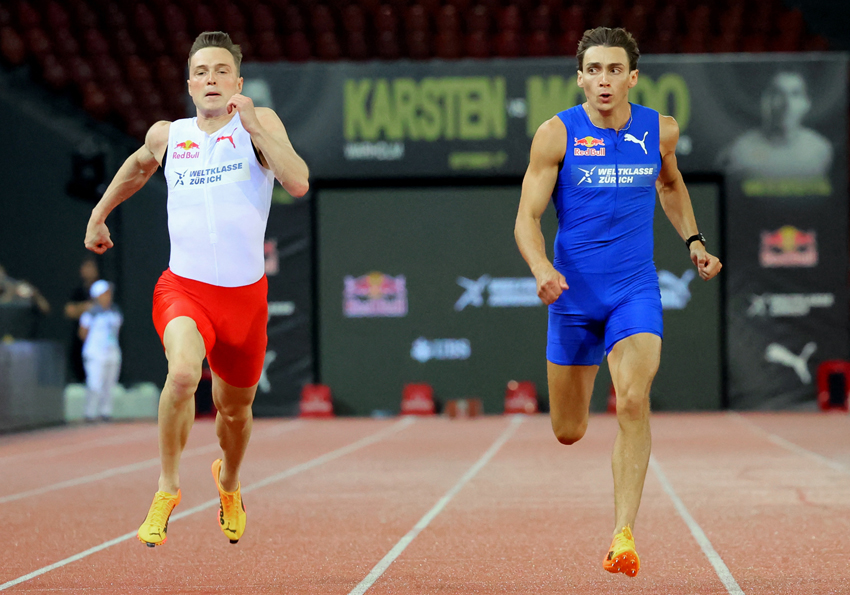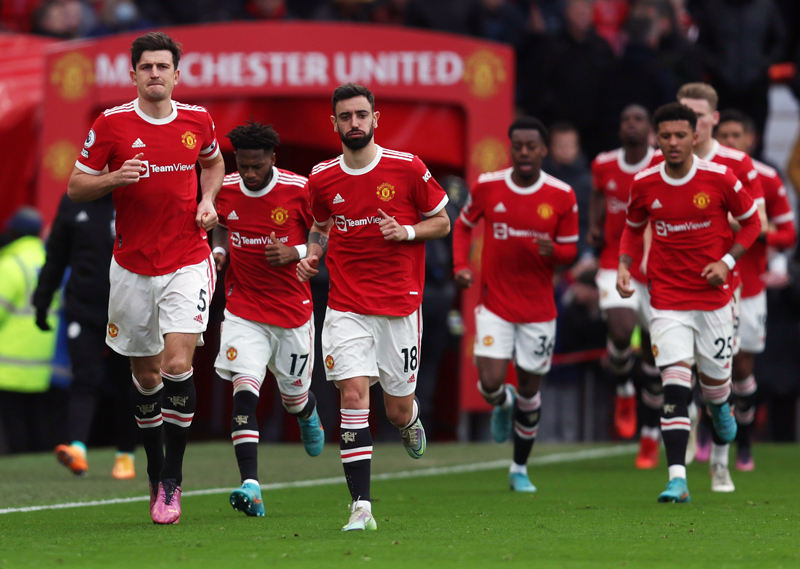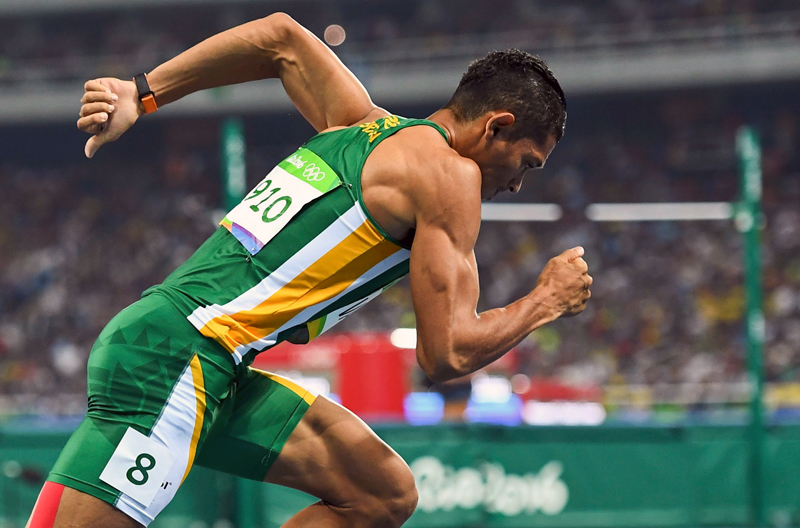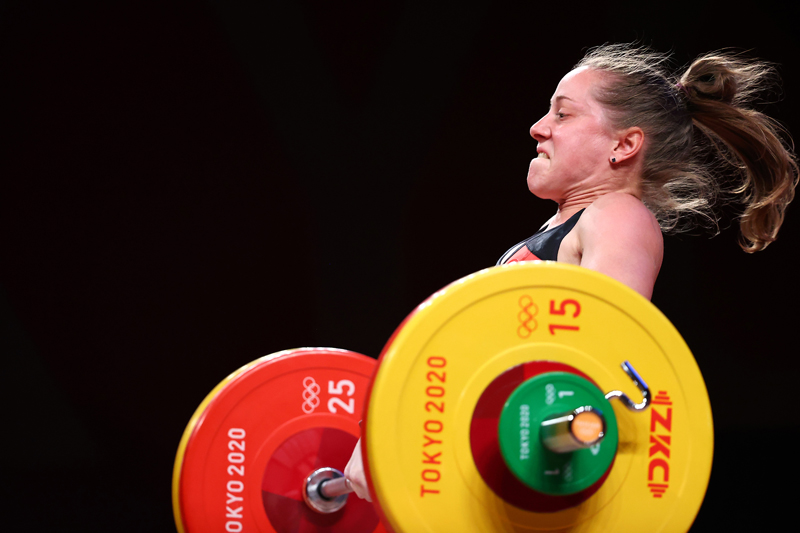I'm a big advocate of hill training, and most athletes - especially those who have reaped the rewards of running on hills - don't question why. Occasionally, though, someone asks me what is really so great about this form of training. Sometimes they ask which leg muscles benefit most from hill running. Another popular question is: 'How can running on hills make you a faster runner on flat surfaces?'
These questions can't be answered simply. To really understand how hills work to improve running capacity, you need first to understand that the movement of the human body during running is similar to the bouncing of a ball. Running involves a bouncy gait in which energy is absorbed passively by muscles and tendons in a leg whenever a foot hits the ground, so that the body can be momentarily slowed and lowered.
Much of that absorbed energy is then used to lift and accelerate the body during the latter part of footstrike, so that toe-off can be accomplished and an athlete can 'fly' through the air towards an eventual collision of the other foot with the ground. Such flight can be considered a 'budget special', since it is accomplished at low cost; that is to say, the energy stored when the foot strikes the ground furnishes the majority of the propulsive force necessary for the ensuing flight. Mechanically, muscles and tendons stretched during impact simply recoil like rubber bands - without additional metabolic cost - to push the body upwards and forwards.
A ball behaves in the same sort of way: when a ball hits the ground, its surface deforms (just as the human leg does by flexing at the ankle, knee and hip), absorbing energy in the process. As this deformation occurs, the ball decelerates and its centre of mass moves lower - the precise actions of the human body during the initial stage of footstrike. Of course, the ball's absorbed energy is released as its surface springs elastically back to its normal configuration, and the resulting push on the ground lifts and accelerates it. Like the running human body, the ball flies upwards and forwards toward its next impact with the ground.
Naturally, the human body also functions in ways balls never even dream about! Specifically, when the human foot is on the ground during running, some leg and trunk muscles must actively expend energy to provide the force necessary to support the body, keeping it upright in an efficient running posture; a ball's 'posture', on the other hand, is maintained without cost - through internal air pressure and the ruggedness of its 'shell'.
Interestingly, the supportive role played by muscles when the foot is on the ground is usually the result of isometric - or nearly isometric - muscle actions. These are the actions in which muscles exert force without actually shortening. If you have trouble picturing this process, think about what would happen if you placed your hands under a 600lb rock and tried to lift it from the ground; the muscles of your arms and legs would produce tremendous amounts of force, but they would not shorten since the rock would not move!
Isometric actions in running
It might seem odd that isometric - or nearly isometric - actions play such a key role during running, given the dynamic nature of the activity. However, think for a moment about the movement of your trunk as you run: if all is going well and you are running efficiently, your trunk - or upper body - will remain in a fairly stable position as you move; if it waggled back and forth precipitously, you would be a very inefficient runner. This relative motionlessness of the trunk is a result of isometric contractions of your abdominal and low back muscles; if those muscles' actions were concentric (ie involving actual shortening), your trunk would flap around a lot, pulled one way by the abs and the other by the sinews of the lower back.This knowledge that forward movement is accomplished mainly by storing and then releasing the energy of impact, while stability is attained via isometric muscular contractions, can be used to help athletes who want to enhance their running economy - ie run more efficiently. Such athletes should try to minimise their cost of producing force as they run by letting the stretch and recoil of tendon and muscle 'springs' do even more of the work needed to bounce their bodies forward; at the same time, they should not waste too much energy keeping their bodies stable. Furthermore, as running speed increases, and the amount of work carried out per step rises in consequence, these runners should be able to let 'recovery energy' (the non-costly 'recoil' energy) shoulder an increasing proportion of the required work, while actual muscular work is limited.
Comparing athletes with turkeys
To see if this is what efficient athletes actually do, we must look at - turkeys! Recently, the researcher Peter Weyand and colleagues at Harvard and Northeastern Universities implanted sonomicrometre crystals in the calf muscles of turkeys to measure the changes in muscle fibre length during running. They also put strain gauges in the turkeys' calf-muscle tendons to measure muscular force production during movement. The turkeys' gait patterns were then analysed as the gobblers cruised at velocities of up to four metres per second (about 6:42 per mile pace) both on level ground and up 6deg. and 12deg. inclines (1).When the turkeys were on the level, large changes in calf-muscle length occurred only during the swing phase of the gait cycle - when the relevant foot was off the ground; the calf muscle elongated by about 33% as the leg swung forward but only 7% when the foot was on the ground. As you can see, the calf muscle was preparing for its spring-back (energy-recovery) function during forward swing and was operating more isometrically and supportively when the foot was in its ground-contact stage.
The force produced by the calf muscle during swing acts to decelerate the foot during ankle flexion and then accelerate the foot towards the ground as the ankle extends. Most of this force was produced passively in the turkeys (ie without energy expenditure) because of the spring-like behaviour of the calf muscle as it was stretched beyond resting length during forward swing. As a result, electromyographic (EMG) activity (which shows the extent of active muscle contraction) in the calf during swing was less than 5% of EMG activity during the stance phase of the gait cycle - for all running velocities!
During stance, the calf-muscles' actual force production was 10-20 times greater than during swing, but the muscles shortened by very little; in fact, the maximum shortening was 6.6% of resting length at the top running speed. As one might hope, recovery energy provided more than 60% of the work of the calf muscle and its tendon, and recovery work's contribution to the overall work 'pie' increased as running speed advanced. The calf muscles were indeed operating efficiently!
With all this in mind, we can now turn our attention to what happens when running is carried out on an inclined surface. Bear in mind that recovery energy can only give back energy which is stored when a foot hits the ground. When an individual runs up a hill, there is an increase in the potential energy of the body with each step. This augmentation of potential energy clearly cannot come from recovery energy (which preserves but does not add energy) and must therefore be furnished by active muscular work. Indeed, the net calf-muscle work per step increased from near zero on the flat to about 3 Joules/kg at 6deg. and nearly 6 Joules/kilogram at 12deg.. Did this extra work come from the isometric, stabilising actions of the muscles?
As you think about this, remember that the muscular force required to support and coordinate the body is relatively independent of incline. The mass of your body does not change as you climb a hill, and therefore support forces change little, if at all. Thus, almost all of the increase in muscular work associated with running up inclines must occur as a result of increased muscle shortening.
Returning to our friends the turkeys, whenever they ran on a 12deg. incline their calf muscles were appreciably longer during the early stage of footstrike than when running on a flat surface. The same thing happens to you when you run on a hill; the inclination of the hill thwarts plantar (downward) flexion of your ankles prior to impact and dorsiflexes your ankles for you as your feet hit the ground, keeping your calf muscles stretched. The result is that your over-stretched calf muscles must shorten more during the stance phase of incline running in preparation for toe-off than is necessary when running on the flat.
Hill running is not anti-neural
This increased shortening greatly magnifies the net work per step performed by the calf muscles, and the same magnification of work output would occur in the hamstrings. The increase in muscular work associated with incline running is linked with the activation of a greater number of calf-muscle fibres. In fact, EMG data on the turkeys suggested that running up a 12deg. slope required three times the volume of calf-muscle fibres than level running at the same speed. Interestingly enough, stance time did not increase during incline running, which indicates that the average rate of shortening of the calf muscle actually increased with inclination. This is important, since critics of hill running have argued that it is 'anti-neural' - ie that it slows down muscular movement and the rate at which muscles are recruited by the nervous system. The turkey data show that, at a specific speed, crucial running muscles like those of the calves actually contract more quickly on hills than they do on flat ground.You might think that the young turks' calf muscles produced more force in order to drive their bodies up the 12deg. 'hills' - especially since three times the volume of calf-muscle cells were involved per step. Far from it: their calves actually produced the same amount of force at 12deg. as they had on the level! If this seems surprising to you, you must have forgotten about the time-honoured force-velocity properties of muscles: as the velocity of muscle contraction increases, force production decreases. If this concept is a little wild for you, just think how much more quickly you can lift a barbell with 10lb attached than one with 100lb! Getting back to the turkeys' calves, they were shortening more rapidly on hills, and this rapid shortening balanced the recruitment of extra muscle fibres, keeping force production constant. The increased work required for hill climbing was accomplished not via greater force production but via faster, longer contractions of the calves.
If this seems confusing as well, remember that muscular work equals force times distance (W = F X d). The Harvard-Northeastern scientists found that calf-muscle work per step increased on 12deg. hills, even though force (F) remained unchanged. What did change, of course, was d - the distance moved by (the change in length accomplished by) the calf muscle in its contractions during footstrike. With F unchanged and d spiked, work (W) increased significantly.
So, the calf muscles did more work by moving a greater distance during footstrike. In other words, on hills the calf muscles were learning to contract more quickly when the foot was on the ground. The calf muscles were not learning to generate more force - but to generate work at a higher rate. In short, they were learning to become more powerful. (Power is just work divided by time; in our turkey case, time - footstrike time - stayed the same, but work increased dramatically, causing power output to rise.)
On flat ground, this ability of the calf muscles to work more powerfully during footstrike should translate into shorter footstrike times and higher running speeds. Why shorter footstrike times? With the calf muscles reacting at a higher rate, the amount of work necessary to sustain a particular velocity could be performed in a shorter period of time, allowing toe-off to occur more rapidly. Alternatively, speed of contraction could be slowed but recruitment of 'extra' calf-muscle cells could be retained, enhancing force production and thus stride length. Naturally, the footstrike and stride-length pay-offs might occur simultaneously.
On hills, key muscles like the calves learn to sustain force at high contraction speeds. This defies the classic muscle force-velocity relationship principle, which states that muscles exert less force as their speed of action increases. Muscles accomplish this feat by recruiting extra fibres into action (three times as many in this study), which means that hill running has a very broad strengthening effect in addition to its ability to boost power. That's an exciting aspect of hill training, and it is why the discipline is so fantastically useful for athletes who depend on high running speeds to do well in their sports. Football players, basketballers, rugby scrummers, cricket batsmen and fielders, and even runners - take note!
Practical hill training
Athletes can use hill training throughout the year, but it is best to delay emphasising it until you have already completed a circuit-training base to build overall body strength and coordination and until you have also become very familiar with running-specific strength training which mimics the movements required for running. (Such training would include one-leg squats, lunges, bicycle leg swings, one-leg heel raises, runners' poses, etc.) This progression will help to ensure that hill work does not increase the risk of injury and that hills are run with a high degree of coordination and at decent intensities. During a hill-emphasis period, hill workouts can be completed 2-3 times a week.Here's a selection of our hill-session favourites:
1. Warm up by jogging easily for 10-15 minutes, and then carry out repeats on a hill with an incline of about 10% (one foot of elevation for every 10 feet of horizontal movement) and a length of at least 50m (anything between 200 and 800m would be ideal). Run at an intensity that feels rougher than 5k racing on your ascents, maintaining a rapid stride rate as you climb. Recover by jogging easily back to the bottom (for very steep slopes or distances over 600m, you'll need someone to taxi you down in a car or on a bike) and surge up again as soon as you feel ready. Start with about four reps for your first session (more if the hill is really short) and gradually increase the number of reps over time. If you can't find a 10% slope, you'll simply have to use a treadmill for this workout.2. On a more modest hill (about 2-3% incline), run aggressively for 1,000-1,600m, trying to stay as close as possible to 10k race pace, then recover by jogging back to your starting point. Start with just two reps, building up to four as your power and overall fitness increase. Make sure you maintain your usual rapid stride rate. If a hill like this is unavailable, go for a treadmill workout consisting of three-minute work intervals at 10k pace on a 3% incline, with three-minute jog recoveries. In this case, start with four reps and build.
3. Over very hilly terrain, ramble for about an hour or so, working very hard on all ascents and recovering by going easy on the downslopes and/or flat areas in between hills.
4. To complete a very special hill workout which we call 'Shane's mill-hill tempo run', begin by jogging very easily on a treadmill for about 10 minutes. Once you are feeling loose and ready to work, set the treadmill inclination at 4%. For your first stab at this workout, simply set the treadmill speed at a level which permits you to work fairly comfortably. The workout then proceeds - without break - as follows:
Five minutes at 4%
10 minutes at 5%
l0 minutes at 6.5%
10 minutes at 7.5%.
This will give you 35 minutes of running 'under pressure', with the treadmill inclinations within the rugged range of 4-7.5%. Naturally, you should then cool down with 10 minutes or so of easy jogging.
As mentioned, choose an apparently easy pace for your first stab at this latter workout. If you can complete the 35 minutes without excessive discomfort, up the treadmill speed by 0.5mph for your next session, which you should aim to complete about a week later. For example, if you chose 7mph for your first session and things went pretty well, step up to 7.5mph for the next effort, and so on. Out of our four recommended sessions, this last is actually our favourite. It is similar to the workouts used by top Kenyan runners when 'sharpening' themselves before their most-important competitions. (The Kenyans don't use treadmills, though, preferring to use the natural Kenyan topography to create situations in which continuous climbing is necessary.) As well as boosting strength and power, this session will raise your VO2max and lactate threshold quite convincingly. Athletes who use it achieve quite high heart rates - even above those achieved during interval and fartlek sessions - for extended periods of time.
The bottom line?
If you want to be a more powerful athlete, hill training can be an extremely valuable training asset. Use the workouts described above a couple of times a week for five weeks-or-so, move into a programme of 'explosive' training for another five weeks, and you will emerge with a higher max running velocity and greater overall fitness. These enhanced capacities should, in turn, translate into improved performances on pitch court or track.Owen Anderson










